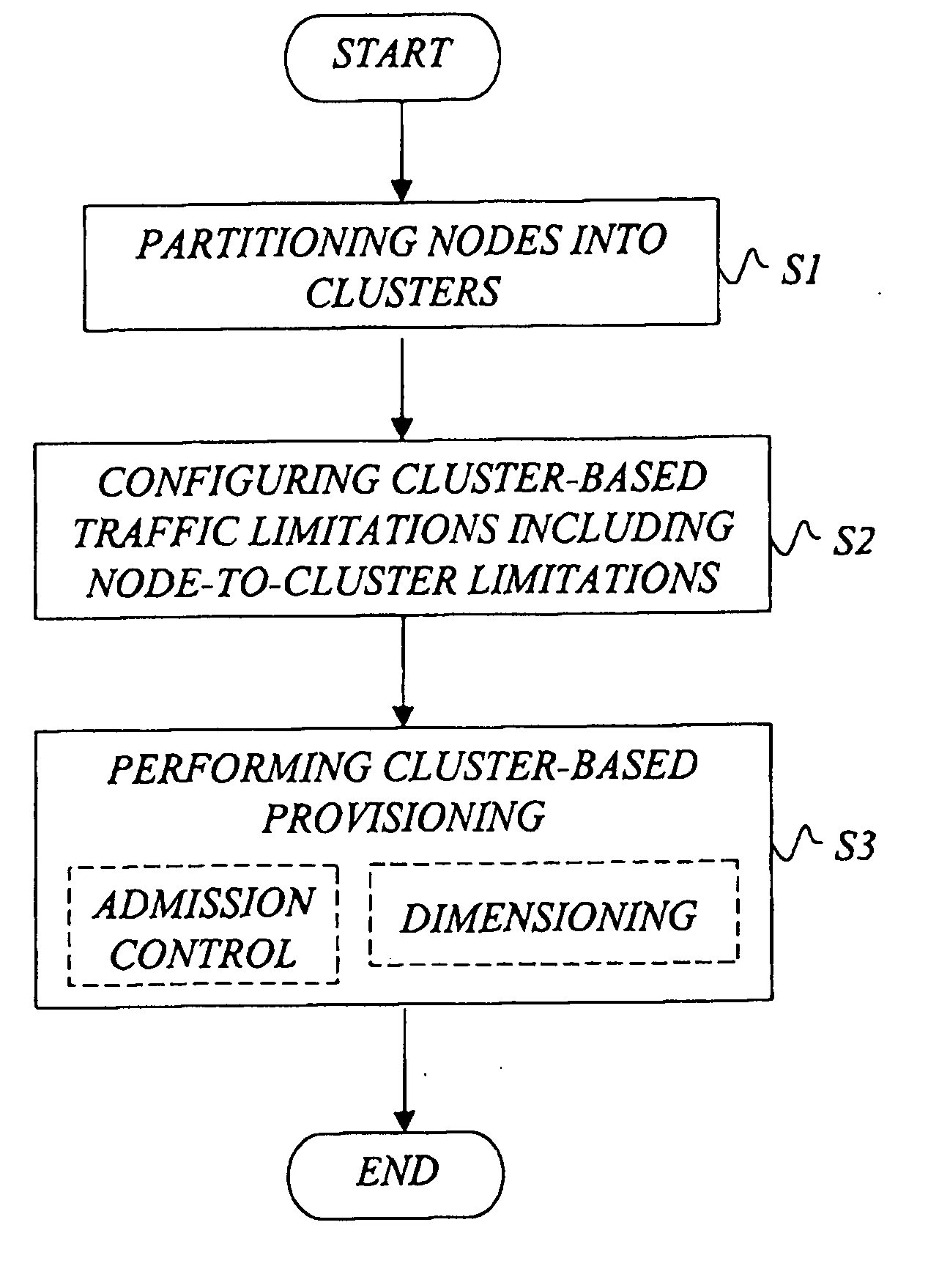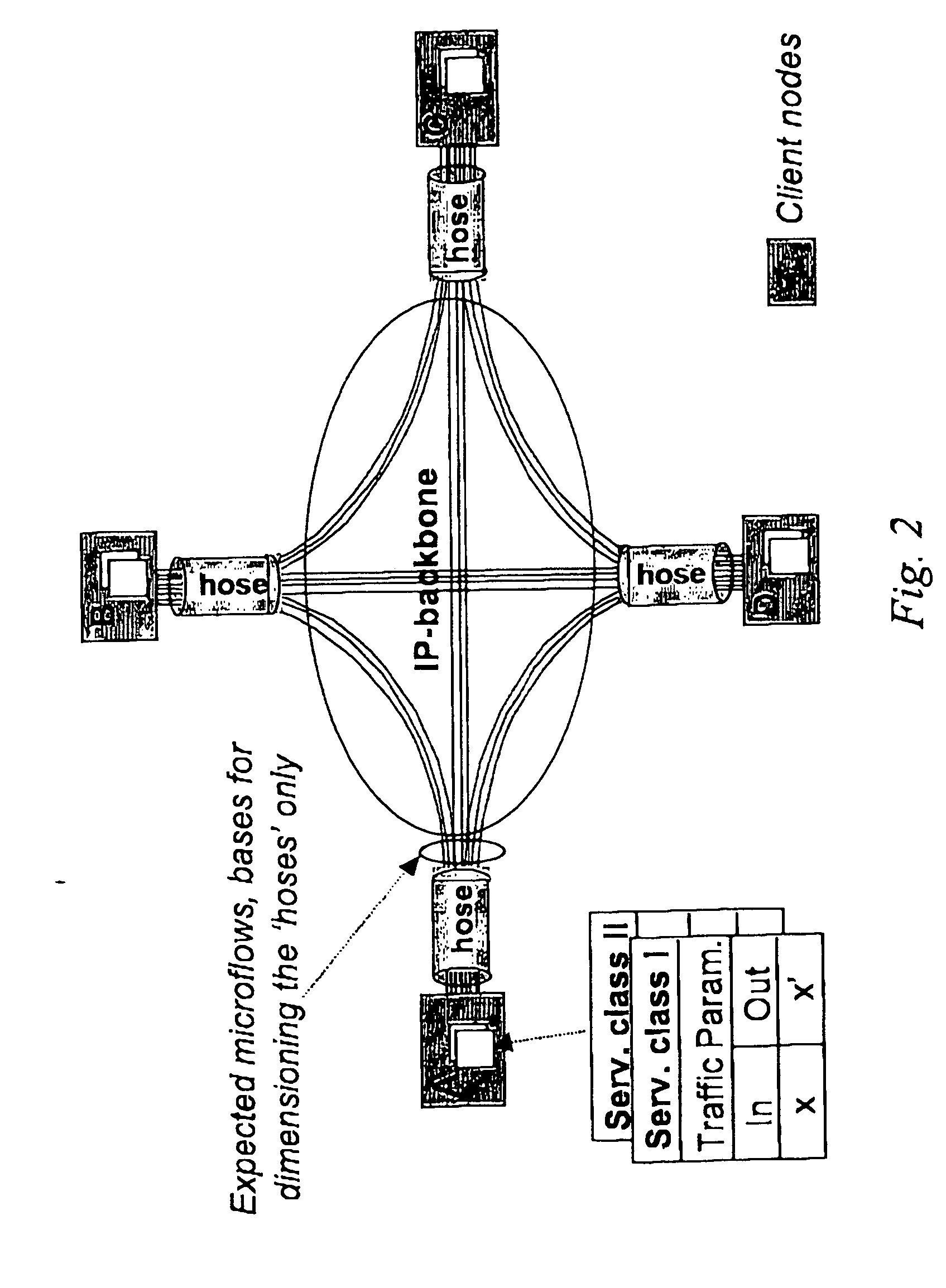Cluster-based network provisioning
a network provisioning and cluster technology, applied in data switching networks, frequency-division multiplexes, instruments, etc., can solve the problems of poor bandwidth efficiency of hose models, large overprovisioning factor, limited bandwidth efficiency comparison of traditional pipe and hose models, etc., to achieve the best bandwidth efficiency, the complexity of the trunk configuration grows fast, and the network operation is more effectiv
- Summary
- Abstract
- Description
- Claims
- Application Information
AI Technical Summary
Benefits of technology
Problems solved by technology
Method used
Image
Examples
example network
[0174] A possible cluster definition for an illustrative core transport network is shown in FIG. 7. It should be understood that more than two levels, i.e. the underlying nodes and the clusters, can be included in the logical network representation. In the example of FIG. 7, we have optional super-clusters indicated by ellipses. Note that sites can also be considered as clusters.
[0175] A possible set of entries of admission control in MGW 6 (in Site 6) is as follows:
Inter-Cluster Trunk / Intra-Cluster Trunk Model
[0176] Inter: [0177][0178][0179]
[0180] Intra: [0181][0182][0183]
[0184] In this example, Cluster C should be dimensioned according to trunk model. The traffic between cluster A, B1, B2 and C is also dimensioned according to the trunk model.
[0185] If the bandwidth efficiency of hose dimensioning is sufficient for the traffic of Cluster C then the above list can be replaced by:
Inter-Cluster Trunk / Intra-Cluster Hose Model
[0186] Inter: [0187][0188][0189]
[0190] Intra: [0191]...
PUM
 Login to View More
Login to View More Abstract
Description
Claims
Application Information
 Login to View More
Login to View More - R&D
- Intellectual Property
- Life Sciences
- Materials
- Tech Scout
- Unparalleled Data Quality
- Higher Quality Content
- 60% Fewer Hallucinations
Browse by: Latest US Patents, China's latest patents, Technical Efficacy Thesaurus, Application Domain, Technology Topic, Popular Technical Reports.
© 2025 PatSnap. All rights reserved.Legal|Privacy policy|Modern Slavery Act Transparency Statement|Sitemap|About US| Contact US: help@patsnap.com



